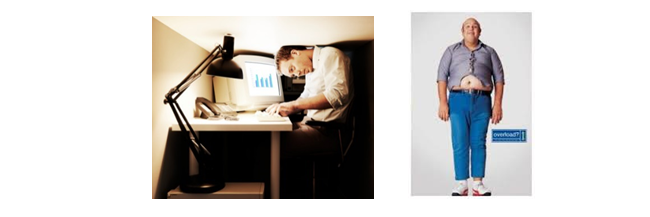Individuals come in all shapes, sizes and abilities. Individual characteristics impact how an individual interacts within an environment or with various objects. These characteristics can include: age, gender, stature, strength, mobility, endurance, vision, hearing, kinesthetic senses, level of training and experience, and health status – to name a few.

If we think in terms of work, a worker is required to complete a series of tasks within a specific work environment. If the environment is not adjustable, if it is not adapted to fit the majority of its users’ characteristics, or doesn’t fit the task requirements, workers must adapt their actions and strategies to maintain performance objectives. Poor designs can result in the worker using poor postures, and potentially developing musculoskeletal injuries and experiencing a decreased efficiency of work tasks.
The “fit” of a workstation is not unlike clothes fitting/sizes. We know that not everyone fits in the exact same size. We don’t typically try and fit into a size 2 if we are a size 8. Why do we treat workplaces and designs differently than clothes fitting? We will adapt our movement and behavior to work with a poor fit or inappropriate design, and then deal with the consequences. A change in this approach is required.

This is where Ergonomics is beneficial.
Ergonomics used in the development or adaptation of an environment and/or products is extremely important. Standards used during development of products/environments do not necessarily represent the range of users and types of movements or cognitive and psychosocial demands required. Therefore, further changes may need to be made by professionals (like professional ergonomists) who understand worker variances, and understand how individuals interact with their environment and work tasks.
Ergonomists can adapt an environment, product or task for one individuals or a group of individuals. Analysis of the type of work being done, the frequency and sequence of work tasks, and the individual and/or individuals that will be using the space is required. Interventions based on these analyses can increase efficiency, improve posture/positioning and decrease musculoskeletal injuries.

